Top speed 579 km/h Length 11 m | Wingspan 14 m Manufacturer Blohm + Voss | |
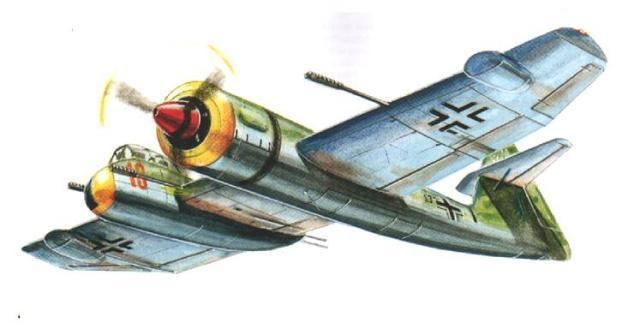 | ||
The Blohm & Voss BV 237 was a German proposed dive bomber with an unusual asymmetric design based on the Blohm & Voss BV 141.
Contents
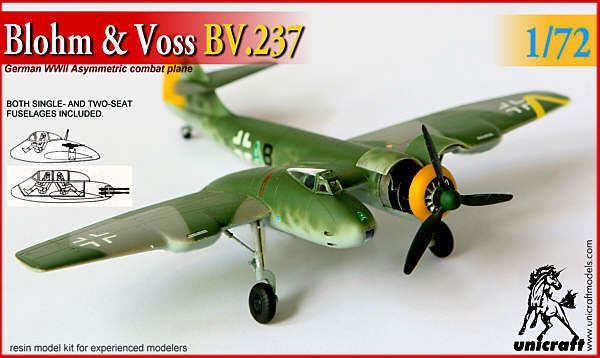
Design and development
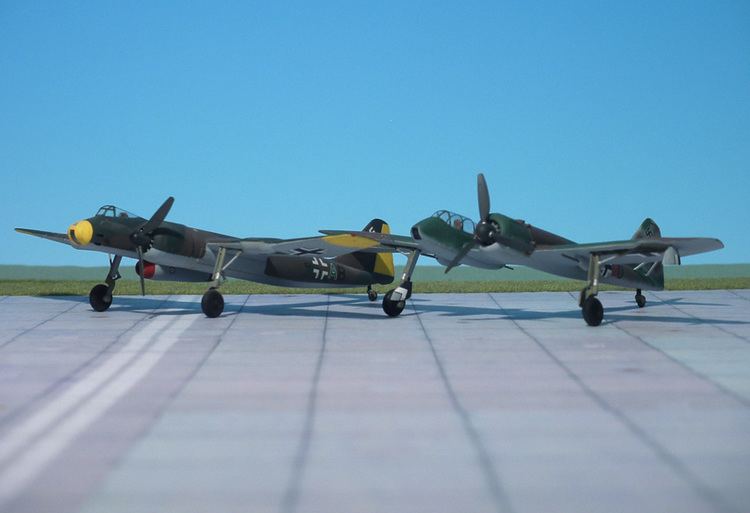
In 1942 the Luftwaffe was interested in replacing the venerable but ageing Junkers Ju 87, and Dr. Richard Vogt's design team at Blohm und Voss began work on project P 177. The dive bomber version would have had a one-man crew with 2x fixed forward firing 15 mm (0.591 in) MG 151 cannon and 2x rear firing 13 mm (0.512 in) MG 131 machine guns, carrying 2,000 kg (4,400 lb) of bombs.
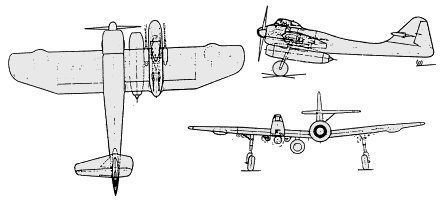
A two-seat ground attack version was also proposed with 2x fixed forward firing 15 mm (0.591 in) MG 151 cannon, 3x forward firing 30 mm (1.181 in) MK 103 cannon with 6x 70 kg (150 lb) bombs.
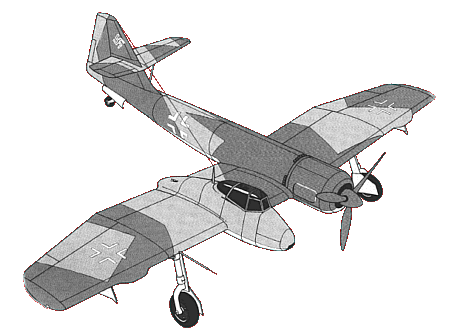
A final B-1 type was to incorporate a Junkers Jumo 004B turbojet engine in a third nacelle slung underneath the wing, between the piston engine and the cockpit.
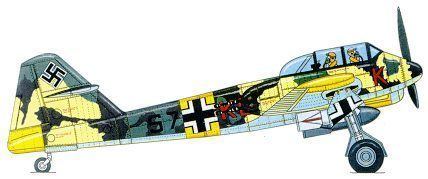
In early 1943 a production order was issued for the P 177 now called the BV 237. In the summer, Allied bombing raids over Hamburg caused no damage to the Blohm and Voss facilities, but the Ministry of Aviation (Nazi Germany) ordered all developmental work stopped. Work continued later and it was determined that construction could begin in mid 1945, but plans for a pre-production A-0 series were abandoned, leaving the project at the pre-production stage near the end of 1944, with only a wooden mock-up completed.
Variants
P.177:Original design work for the BV 237.
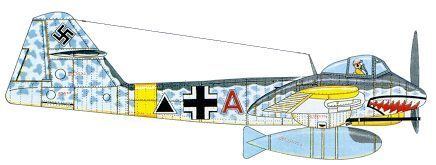
A twin seater Schlachtflugzeug (ground attack) aircraft armed with 2x fixed forward firing 15 mm (0.591 in) MG 151 cannon, 3x forward firing 30 mm (1.181 in) MK 103 cannon with 6x 70 kg (150 lb) bombs.
A proposed mixed-power version with a podded Junkers Jumo 004B underslung between the BMW 801 nacelle and the fuselage.
Specifications (BV 237 )
Data from Die Deutsche Luftruestung 1933-1945 Vol.1 - AEG-Dornier
General characteristics
Performance
Armament
and
